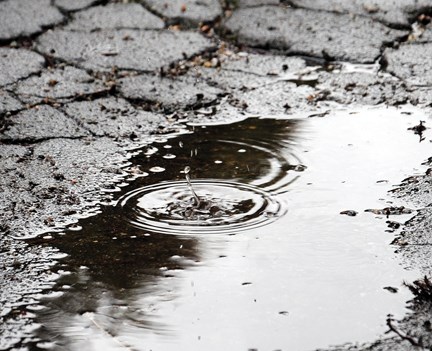Thinking of buying or selling a home?
If you are buying you'll likely need an inspection to evaluate the condition of the house before you negotiate the final price. Home inspections are commonplace today but how many people get a landscape inspection before negotiating the final price?
I read an interesting article by Dean Fosdick of The Associated Press titled: Buying a home? Do a landscape inspection. Fosdick's story contained some good ideas to help United States buyers make informed purchasing decisions.
In B.C., landscape inspections are not widely used by home buyers. This is probably because there are very few certified landscape inspectors for starters. Secondly, proficiently completing a comprehensive landscape inspection requires years of experience, which further limits the field. If you are planning to sell or buy a house, here are some common landscape inspection issues to consider before setting or negotiating the final price.
Landscaping issues that easily contribute to a price reduction:
These can include any existing hazard related to trees. Topped trees are a scientific hazard and may require several thousand dollars to repair or remove depending on the size of trees involved.
Broken irrigation lines, if found, can be costly and intrusive to repair, so run irrigations systems before purchase to ensure proper function.
Lifted or sunken hard surfaces, like walkways, patios or driveways, pose a hazard and are expensive to fix. Check each hard surface area carefully for levelness and proper drainage grading of the surface.
Wood structures, like second story decks and retaining walls, should be checked for rot, deflection and proper construction.
Landscaping issues that are difficult to clarify for price reduction:
To accurately identify plants with pest and disease problems, specific knowledge and experience is required, making it difficult for the average person to see the problem. A knowledgeable horticulturist can diagnose the amount of existing pest or disease damage and predict future damage, which can be quantified as repair cost to negotiate off the final home price. A good example of potential pest and disease cost implication would be chafer damage in the lawn or the neighbourhood.
Plant overcrowding is another potential cost but it's often a matter of taste. Personal taste is compounded by a widely held North American preference for plants that are controlled and "not too big." Those factors make it difficult to quantify overcrowding beyond personal preference. But justified overcrowding has a cost for pruning, transplanting or replacement.
Clarify future landscape maintenance requirements and costs.
All homes require maintenance and so do gardens, trees, lawns and hard landscaping. As a general rule, properties with large lawns require more money to maintain than homes with larger garden areas and less lawn. One hundred square feet of lawn costs twice as much to maintain versus 100 square feet of planting bed.
Trees also have maintenance costs. Unpruned, untopped trees require very little ongoing maintenance. Trees that have been topped, pruned hard or sheared require ongoing annual maintenance costs.
Irrigation systems also require annual maintenance costs and occasional repairs.
Hard landscape surfaces, like stone patios or walkways, if built properly, require very little future maintenance. Cheaply built hard surfaces require ongoing repair or replacement.
Wooden structures, such as pergolas, gazebos and fencing, need careful evaluation to determine the amount of functional lifetime left and future maintenance costs.
Garden design as a cost reduction issue:
Everyone has their own taste in gardens. So is it legitimate to ask for a price reduction if the garden's design is not suitable to the new buyer? Absolutely, but the seller may not be willing to lower their price to account for your taste.
Poor garden design that lacks functionality or is hazardous is easier to quantify than a wellbuilt garden that is not compatible with the buyer's taste. Redesigning and rebuilding an entire landscape is an expensive proposition to be considered carefully before buying a home. Often minor modifications can be made instead of a complete rebuild. Either way there's a cost involved.
Think of a landscape inspection the same way you would a building inspection: each item has a cost associated with maintenance, repair or replacement. The existing hard and soft landscape elements should be appraised for potential cost implications in future. Evaluate the landscaping for plant health, soil quality, structural integrity, safety, drainage, usable life span and significant maintenance costs. Tally up those deficiencies and use the total cost to negotiate the final purchase price lower. Inspect now to avoid paying later.
One final consideration to help develop an accurate landscape inspection is to consider potentiality. Many landscapes contain large mature shrubs and trees that are essentially irreplaceable.
Their value is quantifiable as a percentage of property value.
Landscapes also contain natural features, like boulders, elevation changes and water features, that are a burden to some people but an opportunity for others.
Todd Major is a journeyman horticulturist, garden designer and builder, teacher and organic advocate. [email protected]



